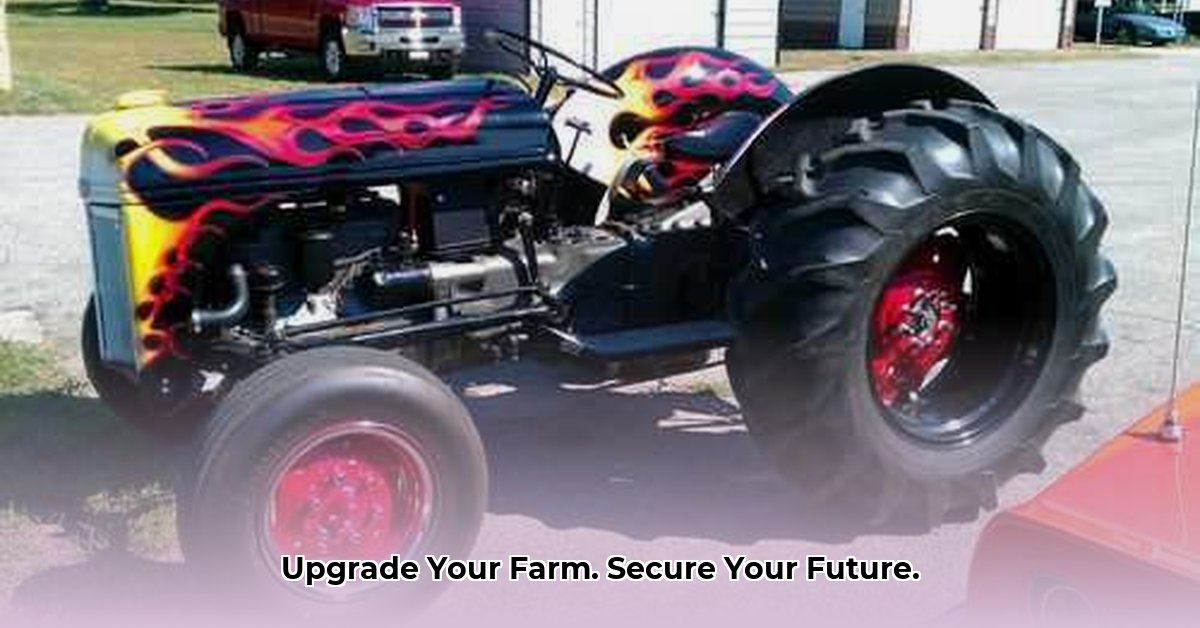
Keeping your farm running smoothly requires reliable equipment, and that starts with your tractors. A stable, secure tractor protects your investment, your crops, and your livelihood. This article explores the challenges and solutions for ensuring your custom tractors are up to the task, focusing on enhanced stability and security in sustainable agriculture. For more information on tractor costs, see this helpful resource: Tractor Costs.
Current Challenges: The Hidden Costs of Instability
Modern farming pushes machinery to its limits. High-yield crops demand efficient harvesting, often on challenging terrain. Unstable tractors incur hidden costs: a tipped tractor means lost time, potential injuries, and expensive repairs. Heavy tractors compact soil, reducing yields. Fuel inefficiency increases expenses. Theft is a constant worry. The lack of standardized attachment points for securing systems creates compatibility issues and safety risks. All this impacts sustainable and profitable farming. How much time and money do you lose annually due to tractor-related incidents?
Existing Solutions and Their Limitations: Quick Fixes and Long-Term Needs
Several companies offer solutions to improve stability and security. Aftermarket bolt-on tiedowns offer a simple way to enhance security for specific tractor models. While effective in certain scenarios, these solutions often lack universality and may not be compatible with all models. Additionally, the environmental impact of producing and disposing of these add-on components requires further assessment. "A comprehensive lifecycle assessment is necessary to determine the true environmental cost of these add-on parts," states Dr. Emily Carter, Agricultural Engineering, University of California, Davis. More comprehensive solutions are needed.
Choosing and Implementing Securing Systems: A Practical Guide
Building robust tractor security involves a multi-step process.
Step 1: Assess Your Farm's Risks:
Before selecting a system, evaluate your farm's specific challenges:
- Terrain: Flat fields require less robust systems than hilly or sloped terrain.
- Climate: High winds, heavy rainfall, or extreme temperatures influence system durability.
- Farming Practices: Heavier equipment necessitates stronger securing systems.
Step 2: Choosing the Right Securing System:
Consider these factors:
- Budget: Balance initial investment and long-term costs.
- Compatibility: Ensure compatibility with your tractor and equipment. Consult manuals and seek expert advice.
- Durability: Opt for high-quality materials for longevity.
- Ease of Installation and Maintenance: Choose user-friendly systems for practical application.
- Safety Features: Prioritize systems with safety features like automatic locking mechanisms.
Step 3: Safe and Secure Installation:
Follow the manufacturer's instructions precisely. Improper installation compromises safety and effectiveness. Use the correct tools and conduct a thorough inspection after installation. A second pair of eyes can be beneficial.
Step 4: Routine Maintenance and Inspections:
Regular maintenance is vital for long-term effectiveness and safety:
- Regular Checks: Conduct visual inspections to spot wear or damage.
- Tightening: Periodically tighten all bolts and connections.
- Replacement: Replace damaged parts promptly.
Future Innovations: Looking Ahead
The future of tractor stability and security involves integrating advanced technologies:
- Sensor-based stability monitoring: Real-time sensors could warn of potential instability.
- GPS integration: GPS technology could warn of hazardous situations.
- Standardized attachment points: Universal attachment points would simplify securing system installation.
- Sustainable materials: Eco-friendly materials would reduce the environmental footprint.
Conclusion: Investing in a Secure Future
Investing in secure and stable tractors is crucial for long-term success. By embracing innovative solutions and preventative maintenance, you enhance operational efficiency, profitability, and sustainability. Stay informed about the latest advancements to optimize your farm's operations for safety and efficiency.